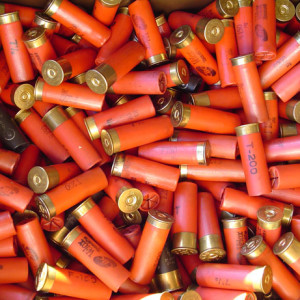
LSA: Still a Great Gun Oil
By: Jim Lavalley

When a firearm is employed, it’s almost always at a time when two conditions must be met. First, the owner must be assured that the gun will fire reliably and accurately for the first shot and several shots thereafter. Second, it must function safely. Diligent maintenance is critical to ensure that these two conditions are met. An unplanned surprise is the last thing anyone needs when putting rounds on target. That’s why smart owners are also habitual, sometimes fanatical, maintainers of their guns. The usual maintenance regimen can include minor repairs, but it will always involve cleaning and lubricating numerous moving parts. Post-fire and periodic servicing of any firearm is a must, as is pre-fire lubrication for scheduled events such as occupational use, ranges and hunting.
Firearm maintenance requires a variety of supplies that perform the jobs of cleaning and lubrication. Considering the time and supplies that must be invested in cleaning and lubricating any gun, any item that combines those tasks will also save time and money. It was that kind of thinking that around the Vietnam War era led the military services to employ LSA to improve the routine maintenance of weapons. LSA is a petroleum-based lubricant mixed with a combination detergent, oxidation inhibitor, and corrosion inhibitors. It’s still used by gun owners, and it can most easily be found in surplus stores. As an acronym, LSA apparently has two different definitions. Both “Lubricant, Small Arms” and “Lubricant, Semifluid, Automatic (weapons)” appear to apply. The current official military supply nomenclature for LSA is “Lubricating oil, semifluid”. If that isn’t confusing enough, the 4-ounce squeeze bottle of the lubricant simply has “LSA Weapons Oil Medium” embossed on the front above the supply data, directions and warning.
My military career began at a time when LSA was the only cleaner and lubricant we were allowed to use on our M16A1 rifles. When I picked up my review sample, I instantly recognized the familiar olive-drab (OD) 4-ounce plastic bottle. There are two other bottle sizes that I know of: specifically a smaller, 2-ounce OD green bottle, and a clear half-ounce bottle for use in the butt-stock storage compartment of M16-series and other rifles. Each size bottle has a black and clear plastic applicator cap that is interchangeable among the other size bottles. The clear outer dispenser cap, like many caps used to dispense similar products, allows the user to observe when contents of the bottle are being squeezed out. The black inner cap provides the base and stopper for the clear outer cap and screws onto the bottle itself. The bottles themselves are also reusable, flexible and durable. By unscrewing the black cap they can be refilled from large containers of LSA, or other fluid contents for that matter. Decades-old LSA bottles are still being used and refilled.
When I unscrewed the cap of my sample, it was obvious the content was good old LSA. I had shaken the bottle before opening, an old habit that needed no reminder from the words “SHAKE WELL” printed plainly on the front. The tan-white liquid clung to inside of the mouth of the bottle. The texture between my fingers was similar to a non-greasy lotion. The predominantly mineral oil smell of LSA, also slightly metallic and plastic, evoked some strong memories. User opinions vary greatly on the odor, but I like it. The aroma of my sample of LSA brought back memories of sitting outside the arms room with my buddies after a day at the firing range. These were good times: all that was missing to complete my memory was the additional smell of cordite from ignited gunpowder, the sound of a radio playing in the background, jokes and laughter from my fellow soldiers, and an uncomfortable seat on a cement floor with my rifle parts and cleaning kit scattered about me.
Putting aside the surprising emotional attachment to the small bottle full of oil, I began to search for more extensive information and opinions about the current usefulness of the stuff. During the early 1980s LSA was replaced throughout the military with CLP (“Cleaner Lubricant Preservative”) for use on small arms. This was due partly because of the need for a gun lubricant that performed better in cold weather. LSA, being petroleum based, tends to thicken in cold conditions. The addition of Teflon® and cleaning solvent to CLP also improved the versatility of the LSA replacement, supposedly making it a better gun cleaner and anti-corrosion agent. I used both LSA and CLP during my twenty-year Army career and didn’t notice any difference in performance between them. I just used whatever they gave me to clean and lubricate my firearm; elbow grease did the rest.
Gun enthusiasts are a passionate bunch, fiercely loyal to their products. The opinions about LSA vs. CLP and other lubricants run the gamut. There are LSA enthusiasts who swear by its properties over all else. Online discussions include those who malign CLP for the residue left behind when using it as a cleaner. The opposing viewpoints cite LSA’s cold weather problems and durability. Like one’s choice of an automobile, it often comes down to personal choice and availability. Still, there are significant differences. According to the Material Safety Data Sheets for each product, LSA is denser than CLP. This would suggest that LSA will hold up better in older/heavier firearms with larger/less complex mechanical components, hotter temperatures and climates and possibly dirtier conditions. The flashpoint of LSA is also 32˚F higher than CLP, making it less inclined to burn off and leave residue.
These days I work as a civilian in military contracts for supply and logistics, so I figured I’d look up the stock number for LSA on the Federal Logistics Information System to see if LSA is still used within the Department of Defense. After all, if it’s still good enough for the military, it should still be good enough for other firearms. The result surprised me. Despite its apparent replacement for small arms by CLP, LSA is still readily available within the military supply system. The list of equipment upon which LSA is used today is also impressive. It includes several large-caliber weapons systems, various aircraft, naval ships, and grenade launchers. It’s still authorized for use on rifles, pistols, and even as a cleaning and sharpening oil for bayonets*. LSA is currently produced by a number of big name lubrication manufacturers. Obviously, LSA isn’t as obsolete as many online gun-enthusiast blogs would lead us to believe. Additionally, LSA is noted as having a limited shelf-life, but I’ve read of gun owners currently using 40-year-old bottles and cans of LSA with no problems other than the requirement to stir or shake the contents well.
My conclusion is that LSA still an excellent choice for maintaining a firearm in nearly every environment. It appears that it remains a popular choice for gun owners to this day. For many “old-school” enthusiasts, it’s the only product that will do. As with any surplus item, it’s imperative to personally inspect the quality of the lubricant to ensure it will perform correctly. So, be assured that LSA will do the job you want it to do. Just remember; in order to shoot well, shake well!
*Author’s note – Due to obvious security restrictions, I cannot be more specific about details regarding LSA costs and specific applications in the military services. For trademark reasons, I have also refrained from citing any particular manufacturers of products reviewed.



